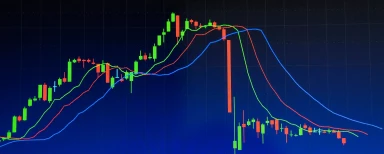-
Hedging is a strategic pillar of risk management in the complex world of trading, and understanding its nuances is paramount for any trader navigating the financial markets.
In our comprehensive blog, we delve into the basics of this invaluable technique. We'll explain the concept of hedging, exploring its techniques in the forex market to more risk management strategies. Discover how hedging can safeguard your investments, minimize losses, and provide stability in uncertain financial market conditions.
Whether you're a novice trader or a seasoned pro, this guide helps you with the knowledge and strategies needed to harness the power of hedging effectively.
What is Hedging?
Forex hedging or currency hedging is a strategy where you open different trade positions to offset any conceivable currency risks related to your current position. The objective behind hedging a position is to safeguard it from any unwanted movement in the trade rates. Hedging strategies can be used to reduce the general risk exposure that the forex market faces because of similar adverse situations, inflation, and changing interest rates.
For instance, suppose you are trading GBP during the United Kingdom’s elections. To hedge the risk that shows up with trading the UK's currency because of the volatile political sentiment in the country, you decide to incorporate EUR/GBP and USD/GBP in your Forex hedging strategy.
To hedge your GBP exposure, you can open a long position for EUR/GBP and at the same time short USD/GBP. Taking two inverse positions will really mean that the pound appreciates against the dollar, the long position will observe a loss, but, the short position will balance it by bringing significant profits. In any case, assuming the pound depreciates against the dollar, the risk related to the short position will be offset by profits made in the long position.
This implies that no matter the depreciation or appreciation in the currency, you will gain profits by balancing the possible losses.
Suggested read: Types of Hedging Strategies
Detailed Explanation of Hedging Techniques in the Forex Market
Hedging techniques in the Forex market are vital risk management tools. Here, in this section, we will explain the various strategies of how traders safeguard their investments against currency fluctuations and market uncertainties.
Direct Forex Hedging Strategy
The main strategy is known as a direct forex hedge. This is the point at which you have a position on a currency pair, and you open the contrary position on a similar pairing.
For instance, if you were long on GBP/USD, you would open a short position with a similar trade size.
The result of this trade would be a net profit or loss of nothing, contingent upon the costs of opening each trade. While a lot of traders would essentially finish the underlying position, tolerating any misfortune that they caused, a direct hedge would empower them to bring in money with the second trade that would prevent this loss.
Direct hedges aren't really worked with on a ton of trading platforms, as the outcome is a finished net off of the trade.
Imperfect Hedging Strategy
The forex imperfect hedging strategy is applied to somewhat protect your already-opened position in the forex market. In this method, not everything except a portion of the risk is wiped out by using call-and-pull choices. If you are in a long position, you can buy a greater amount of the put option to lessen any possible downside risk.
In any case, assume you are in a short position; all things considered, you can go into a buying position for a call option contract agreement to eliminate the risk related to an upside movement in the financial market.
Correlation Hedging Strategy
A common hedging strategy is looking for a correlation between currency pairs. This would include choosing two currencies that regularly have a positive correlation (move in a similar direction) and afterward taking contradicting positions on them.
For instance, GBP/USD and EUR/USD are the most often referred to as having a positive correlation. This is a consequence of the connection between the UK and EU both concerning geology and political alignment - although the last option could change in the coming years.
In this way, if you had a long position on GBP/USD, you could hedge it with a short position on EUR/USD.
At the point when you use a correlation hedging strategy, it’s essential that your openness currently ranges multiple currencies. While the positive correlation works when the economies are moving in tandem, any dissimilarity could affect the way in which each pair moves - and in turn your hedge.
Foreign Exchange Forward Contract
A forex forward contract is an understanding between the trader and the broker to trade the currency pair at a pre-decided date and price. The forward price is determined by considering the current spot price of the currency pair and a risk-free interest rate.
The forex forward contract empowers support by protecting traders against future price unpredictability and movements. It empowers them to fix the rate at which they need to trade the currency pair at a future date.
Cross-currency Swap Hedging Strategy
Since a currency swap is a financial instrument that permits two parties to trade interest payments in a single currency for another, it empowers them to trade specific amounts of two different currencies.
The two parties engaged with the trade will consent to trade principal amounts of a certain currency and will also consent to trade revenue installments in based on those principal amounts. However, the principal amount is never really traded between the two parties; it is just used as a method for computing the interest installments. The interest payments are traded between the two parties involved in the swap.
More specifically, it is usually two financial parties that agree to trade sequences of cash flows in various monetary forms. The incomes are designated in two currencies and traded at fixed or floating rates. The reason for a currency swap is usually to hedge against currency risk, however, it can also be used for speculation.
Hedging Options Strategy
Forex options a product that gives you the option to buy or sell a specific currency pair with next to no commitment to do so. The cost is pre-settled, and an options contract comes with an expiry date, before which you should practice your right or let the agreement lapse.
You can hedge forex risk by involving forex options for the short term. Allow us to figure out this with an example. Assume you wish to buy a currency pair and settle on a call option for USD/GBP, anticipating that the exchange rate prices should fall in the future.
All things considered, you can all the while short-sell a similar amount of foreign currency with a put choice simultaneously to benefit from the price fall from here on out. By doing this, you hedge the risk related to the falling forex position and shield yourself from potential losses.
Hedging Forex With CFDs
A CFD (Contract for Difference) is an agreement between the trader and broker to open a position in the forex market without really owning any currency pair. CFDs are one of the most well-known forex hedging strategies that assist with hedge currency pairs. They are a flexible kind of security that permits traders to effortlessly open positions on one or the other side of the trade. This empowers traders to profit from both falling and rising markets.
Suggested read: Steps to Start a Hedge Fund
A Case Study Illustrating Effective Forex Hedging Strategies
Forex hedging strategies are essential for overseeing risk in the always-fluctuating foreign exchange market. This contextual study reveals insight into the effective execution of forex hedging strategies by a global partnership, outlining the significance of protecting profits and limiting exposure to currency fluctuations.
Organization X, a worldwide manufacturer, confronted a huge test in dealing with its global operations because of unpredictable exchange rates. They started a complete hedging strategy to safeguard against adverse currency movements.
To begin with, they utilized forward contracts to secure positive trade rates for future exchanges. This guaranteed price stability despite currency volatility, increasing their profit margins.
Now Organization X used options contracts to give them the adaptability to benefit from great currency movements while restricting expected misfortunes. This approach permitted them to take part in cash gains without presenting themselves with undue risk.
Finally, they diversified their currency exposure by keeping a blend of currencies in their portfolio. This diminished dependence on solitary currency and spread the risk across various markets.
Through these prudent measures, Organization X really dealt with its forex risk, guaranteeing stable profits and lessening the effect of exchange rate fluctuations. This contextual analysis highlights the meaning of carrying out a balanced hedging strategy to thrive in the worldwide market.
Best Practices to Implement a Successful Forex Hedging Strategy
Executing a successful Forex hedging strategy is vital for traders meaning to oversee risk and protect their investments in the forex market. So, in this section, we will explain the top tips every trader should consider while choosing the best hedging strategy to safeguard their investment.
Thorough Risk Analysis
The pivotal initial step in formulating a Forex hedging strategy is to conduct a comprehensive risk assessment. This risk assessment should encompass an evaluation of your risk resilience, exposure to potential currency fluctuations, and, currency exchanging targets. An inside and out comprehension of your risk profile empowers you to fit your forex hedging approach to deal with and meet your particular requirements.
Establish Clear Objectives
It is fundamental to characterize your hedging objectives. Could it be said that you are looking to hedge for short-term risk mitigation, or would you say you are holding long-term protection? The lucidity of your goals will direct the forex hedging strategies you employ.
Stay Ahead of the Forex Hedging Curve
Cautiousness is pivotal. Keep up to date with financial occasions and economic events, forex market news, and worldwide advancements that can affect currency values. This data is instrumental in timing your hedging moves precisely.
Position Sizing
Appropriate sizing of your Forex hedging positions to line up with the size of your hidden positions is fundamental. Over-hedging in forex can dissolve potential profits, though under-hedging in forex opens you to additional significant risks.
Record-Keeping of Forex Hedging Activities
Keep up with careful records of your Forex hedging activities. This practice permits you to dissect the viability of your strategy over the long haul and make informed adjustments depending on the situation.
Seek Professional Guidance
For fledgling traders, looking for guidance from experienced Forex experts or financial counsels can be significant while contriving a tailored hedging strategy that suits your unique necessities. Their mastery can assist you with exploring the complexities of spot transactions, limit orders, forward contracts, and derivatives inside the Forex market while guaranteeing your risk management is on point.
Conclusion
Hedging in Forex trading is an important risk management strategy that furnishes traders with a security net in the violent waters of the foreign trade market. By utilizing different hedging techniques, traders can safeguard their investments against unfavorable market movements, guaranteeing more unsurprising outcomes.
While it may not take out all risks, hedging considers better command over likely losses and gives genuine serenity in an innately unstable market. In any case, it is fundamental for traders to figure out the complexities of hedging, select the right strategies, and exercise caution to stay away from overcomplicating their positions. When used wisely, hedging can be an integral tool in a Forex trader’s arsenal.

















































